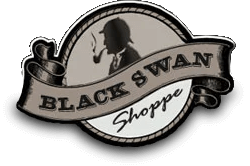Alfred Dunhill White Spot Pipes
Alfred Dunhill White Spot Shell Briar Group 3 Quaint Churchwarden (DUDPS3QUT)
- Overall Length: 247mm
- Overall Height: 70mm
- Bowl Height: 42mm
- Bowl Diameter: 34mm
- Bore: 18mm
- Weight: 36g
- Deluxe Presentation Box
Alfred Dunhill The challenge of a Dunhill history is to separate myth and legend from history. This, however, may be impossible. The story of Alfred Dunhill is so tied up with myth that the myths are now part of the history. Alfred opened a small factory of his own in 1910. He set down two principles that would guide the production of Dunhill Pipes. First, pipes would be made of only the finest quality briar, with exacting care by expert craftsmen. Secondly, the pipes would be priced accordingly; the customer would recognize the value of a superior product. This ran counter to the current trend of inexpensive pipes of poor quality that one simply discarded after a short while. The Dunhill pipe was made to last a lifetime and always with an eye to utility. It must smoke well and continue to do so with age.
Alfred Dunhill White Spot In 1915, the famous white spot was introduced for very practical concerns. With straight pipes, customers had trouble knowing which way to insert the handmade vulcanite mouthpieces. So Alfred Dunhill ordered white spots to be placed on the upper side of the stem. This very practical solution would become a definitive trademark of Dunhill pipes. The “white spot” soon became known as a symbol of quality.
Shell Briar Pipes Alfred Dunhill’s most revolutionary innovation was the Shell pipe in 1917. How this technique of sandblasting came about is somewhat of a mystery. The story often told is that Alfred Dunhill went down into his basement in the wintertime to make a couple pipes and accidentally left one, a half finished piece, by the heating boiler. He returned sometime next summer, having suddenly thought of the pipe, only to find some of the grain had ‘shrunk’, leaving a relief pattern. Obviously, this is apocryphal, probably resulting from the ‘shrunken’ look that sandblasts (especially the gnarly ones of that era) frequently have. Some say the name “Shell” came from the shriveled look the pipe took on after the sandblasting process. Alfred realized Algerian briar, then considered inferior, could be used in this new process. The softer wood could be ‘blasted away’, leaving behind only the harder briar and the beautiful natural pattern of the wood. Originally, the Shell pipes were not stamped because the sandblasting technique, not yet being refined, made recognizing the standard shape much more difficult. Though the Shell finish certainly did not arise from accidentally forgotten pipes in the cellar, it was definitely an important innovation on Dunhill’s part.
Dunhill Size Groupings Although scarcity of fine briar has always necessitated the pricing of Dunhill according to the amount of root employed in their manufacture, it is important to remember that, irrespective of size and price, they are of one quality only – the finest. The bowls are sorted into 6 groups. Group 1 Small Group 2 Medium to small Group 3 Medium Group 4 Medium to Large Group 5 Large Group 6 Extra large
ONE OFF PIPE: This is a one off pipe and the pipe in the picture is the exact pipe you will receive. Please note that colour varies depending on your computer monitor and may not replicate the colour exactly.












